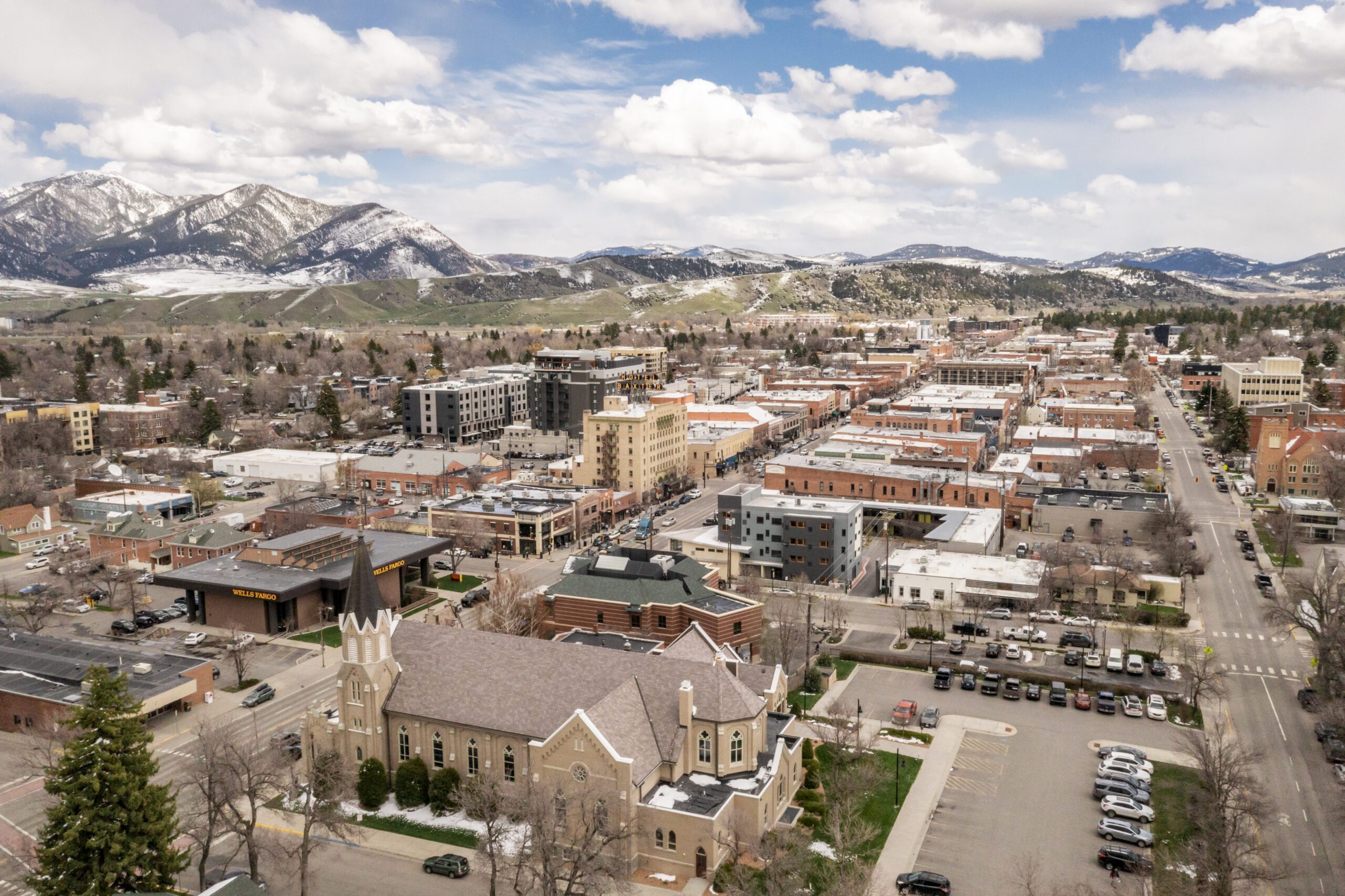By Fischer Genau DIGITAL MEDIA LEAD
This November, Bozeman residents will have the chance to vote on the Bozeman Water Adequacy Initiative, a proposal that aims to address affordable housing and water availability in the city. Some say it will do the exact opposite.
The ballot initiative, drafted by Water Adequacy for Residential Development, or WARD, would amend the Bozeman Municipal Code to change how water rights are given out to developers. If passed, the initiative would essentially require developers to make 33% of new residential housing units “affordable” if they want to build within Bozeman city limits. WARD says that this would both increase the quantity of affordable housing in Bozeman and help prevent the depletion of its finite water supply.
“This policy will solve two of the most pressing issues Bozeman currently faces: a lack of affordable housing, and a limited water supply,” WARD said in their policy brief.
However, numerous groups, including the City of Bozeman and the Gallatin County Commission, have spoken out against the Bozeman Water Adequacy Initiative. They say that it will actually drive up housing prices and degrade the area’s water supply by reducing the amount of housing in Bozeman and driving development outside of city limits.
Origins of the initiative
WARD formed in the spring of 2024, emerging from conversations about water availability and Bozeman’s lack of affordable housing, and a first draft of the water adequacy ballot initiative was written soon after, exercising the peoples’ right of initiative and referendum reserved by the Montana Constitution.
“The initiative came out of, what could we ask for in using water as leverage to get something needed in our community?” Natsuki Nakamura, a founding member of WARD, told EBS.
At least three drafts were rejected by the city attorney because they tried to amend more than one part of the Bozeman Municipal Code, but a subsequent draft was approved, and WARD began collecting signatures. To get their initiative on the ballot, WARD had 90 days to gather signatures from 10% of the voting public. They started collecting in March of 2025, and by June, they had 5,800, surpassing their goal. The Bozeman Water Adequacy Ballot Initiative was officially on the ticket.
“This is very, very much an exercise in direct democracy,” Dan Carty, another of WARD’s founding members, said.
Even before WARD’s initiative made it to the ballot, it attracted criticism.
“Plainly stated, we believe this legislation will do the exact opposite of what some believe,” Bozeman city manager Chuck Winn said during a regular meeting of the Bozeman City Commission on April 22. “We believe it will drive up housing costs, it will reduce the number of affordable housing units being built, and will drive development to the county where water use is less efficient and wastewater is mostly treated by septic tanks.”
At that meeting, several other community members voiced their opinions. Riley Rivers from Southwest Montana Building Industry Association and Anya Linke from Forward Montana opposed the initiative on behalf of their organizations.
“I want our community to come together on creative solutions to the number of wicked problems we face, but I am concerned this initiative will make our problems worse,” Linke said.
Others, including Montana State University instructor and former Bozeman mayor Steve Kirchoff, spoke in favor of the initiative and expressed their frustration towards the city.
“My hunch about this commission is that you are not reading the community properly and you are not listening properly,” Kirchoff said. “Start opening your minds to what people are telling you.”
How the initiative works
The water adequacy ballot initiative relies on Bozeman’s cash-in-lieu of water rights program, a tool the city uses to streamline the distribution of water for new developments. When a developer wants to build a new structure in Bozeman, they must first secure water rights for the property. They can do this by developing a new water right, offsetting the amount of water they plan to use through water conservation, or using the city’s cash-in-lieu program. Through the cash-in-lieu program, a developer pays the city $6,000 per cubic foot of water they plan to use, and the City of Bozeman uses that money to purchase water shares from one of Bozeman’s three main water sources—Hyalite Reservoir, Sourdough Creek, or Lyman Creek.

Of the three ways that a developer can secure water rights, the cash-in-lieu program is by far the most popular. Shawn Kotz, Bozeman’s Director of Utilities, says it can take up to eight years for a developer to develop their own water right, and that 99% of developers end up using the cash-in-lieu program.
“I think [the cash-in-lieu program] is very effective,” Kotz told EBS over the phone. “Basically, it puts water supply development in the hands of the city, and the reason that’s important is that we, as the city, develop water supply projects very efficiently.”
Carty and Nakamura think that the cash-in-lieu program is not ecologically responsible. WARD’s website says that “Bozeman’s rapid growth means the city will outgrow its limited water supply within 10 years,” and Carty said the ballot initiative will require developers to provide a community benefit—affordable housing—if they want to access this finite resource. The ballot initiative would also no longer allow developers to offset their water use through onsite or off-site conservation measures.
However, Kotz says that Bozeman is not in immediate danger of overdrawing on its water supply. According to Kotz, in 2024, the City of Bozeman used 7,100 acre feet of water out of 16,500 acre feet available. That’s about 43%. In a drought year, only 12,000 acre feet of water are projected to be available, which means in 2024 the city would have used 60% of the water supply.
In the last decade, the City of Bozeman has taken steps to conserve water. Since the creation of its Integrated Water Resources Plan in 2013, water use in Bozeman has dropped from 165 gallons per person per day to about 120 gallons. In 2023, the city commission voted unanimously to adopt the Water and Conservation Efficiency Plan to expand on the plan from 2013. The 2023 plan sets new water conservation goals and outlines several programs to conserve more water. Assuming that the plan’s predictions are correct, and the City of Bozeman implements the water-conserving measures it outlines, Bozeman’s demand for water would be well under its supply by 2040.

Nakamura and WARD acknowledge the work the city has done to conserve water, but they suspect it’s only to fuel more population growth.
“I think water conservation measures are super important,” Nakamura said. “We should continue to do those, and I’m happy that the city has done those. But…are we doing it for environmental resiliency when climate conditions are unpredictable, or are we doing it just to support more growth, and then still be in a precarious situation, given a particularly bad drought year?”
So how will the ballot initiative affect Bozeman’s water supply? If the ballot initiative passes and developers meet the new requirement of 33% affordable housing units, they would still be drawing on Bozeman’s water. The only way the ballot initiative would conserve water is if developers decided not to meet the 33% affordability requirement within Bozeman’s city limits and chose not to build in the surrounding area. Critics of the water adequacy ballot initiative think that’s unlikely.
Building affordable housing
In the April city commission meeting, Bozeman’s housing and urban renewal manager David Fine said that in 2019, the city was behind about 1,400 housing units. To keep up with its population growth, Bozeman would need to add 1,200 housing units each year through 2023.
That didn’t happen. Instead, an average of 741 units were built each year within Bozeman city limits, and people flooded into the region during COVID-19. Demand outstripped supply even further, and housing prices shot up.
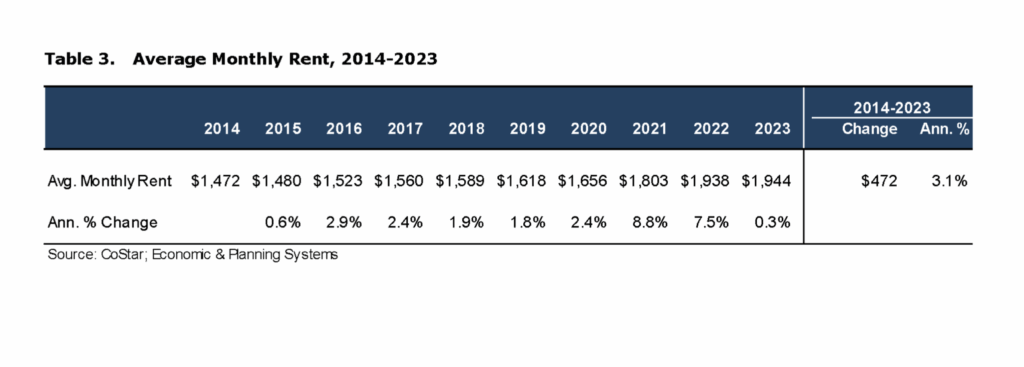
Since 2023, Bozeman has caught up by some metrics. In early 2025, the city had a 12.5% vacancy rate, which housing experts consider an oversupply, and rent prices have begun to soften. But Bozeman still needs more housing for lower-income renters and buyers. The vacancy rate for units that cost an average of $2,300 a month was over 20% earlier this year, according to a Sterling CRE Advisors report. In contrast, Bozeman would need almost 6,000 more affordable housing units to serve the number of people making 60% or less of the area median income, according to a presentation made by the City of Bozeman.
WARD wanted to address that gap. Their water adequacy ballot initiative says that if developers want to use the cash-in-lieu of water rights program, they must make 33% of units in a new project “affordable.” For homes that are for sale, that means they must be priced for households making up to 120% of the area median income ($104,650 for a two-person household), so roughly middle-income families. For rentals, it means units must be affordable to households making 60% or less of AMI ($52,350 for a two-person household), which generally means lower-income renters. WARD argues that Bozeman’s need for affordable housing goes even deeper.
“The need…is much greater than 33%, but the 33% was kind of a compromise of still being feasible and having a mixed income rather than just a low-income development, while still progressing our housing needs,” Nakamura said.
Fine agrees that Bozeman needs more affordable housing, but he expressed skepticism about whether the initiative would work as intended.
“The ability to buy a home has really been outstripped by recent price increases, so I understand the desire to find ways to make housing affordable,” Fine said during the April city commission meeting. “I’m not sure this initiative does that.”
The City of Bozeman hired Economic Planning Systems (EPS), a national land economics consulting firm, to analyze how the Bozeman Water Adequacy Ballot Initiative would impact the construction of new housing. EPS’s study concluded that no new developments would be economically feasible under WARD’s 33% affordability requirement, without considerable subsidies. A subsidy, in this case, is some kind of financial assistance that reduces the cost of building housing units.
For a 30-unit single-family housing development, EPS calculated that meeting the affordability requirement would result in a net loss of $750,000 for the developer. They also calculated that a 90-unit apartment complex is already economically unfeasible in Bozeman, and that the ballot initiative’s requirements would increase the feasibility gap by $2.6 million.
But WARD argues that there are “several flaws and faulty assumptions” in the study that make its conclusions invalid. In WARD member Lorre Jay’s response to the study, she said that EPS’s estimated land cost for the 30-unit single-family housing development was too high, citing lower land costs for other parcels in town. Jay also challenged the statement that a 90-unit, market-rate apartment complex is already economically unfeasible.
“Bozeman has at least 3,200 units in review or under construction as of July 2025 in Bozeman, according to various realtor reports,” Jay said. “It is unlikely that such a pipeline would exist if these projects were producing losses.”
Still, Nakamura acknowledged that some sort of subsidy would be required for developers to reach WARD’s requirement of 33% of affordable housing units. But she argues there are ways for the city to find them.
“I do think there are some subsidies needed to build affordable housing,” Nakamura said. “But those subsidies could be in different forms. They can be in federal tax credits. They could be in TIF—tax increment financing—which the city has given to a number of other projects. They could be subsidized from the other market-rate units to cover the costs, or it could be from productions and profits, so if there is a lower threshold of acceptable profits, that could help subsidize a project.”
Fine doesn’t think that developers can use market-rate units or profit margins to cover the costs.
“You might assume that the greedy real estate developers are not building affordable housing because of their greed or their profit motivation or some other malintent,” Fine said. “But…that’s not what we’re finding in the data.”
The Bozeman Water Adequacy Ballot Initiative does not include any subsidies. It would be up to the city to enforce its requirements and find ways to build the affordable units.
Affordable Housing Ordinance
Bozeman already has an affordable housing program. The Affordable Housing Ordinance, or AHO, creates voluntary incentives for developers to build affordable housing in the city. Since its adoption in 2022, the AHO has helped bring about 1,800 affordable units to Bozeman—371 have been built, 100 are under construction, and 1,306 are being reviewed. But funding affordable housing has been difficult.
Jennifer Boyer, the commissioner for Gallatin County, has worked on several affordable housing projects in Bozeman. One such project, a 182-unit development called Hidden Creek behind the Gallatin County Rest Home, relies on significant subsidies to pay for it. The land it will occupy was donated by Gallatin County, the City of Bozeman chipped in $2 million, the county supplied another $2 million, and the project secured a $2 million bond for infrastructure as well as a low-income housing tax credit, according to Boyer. Still, the project’s success is far from guaranteed.
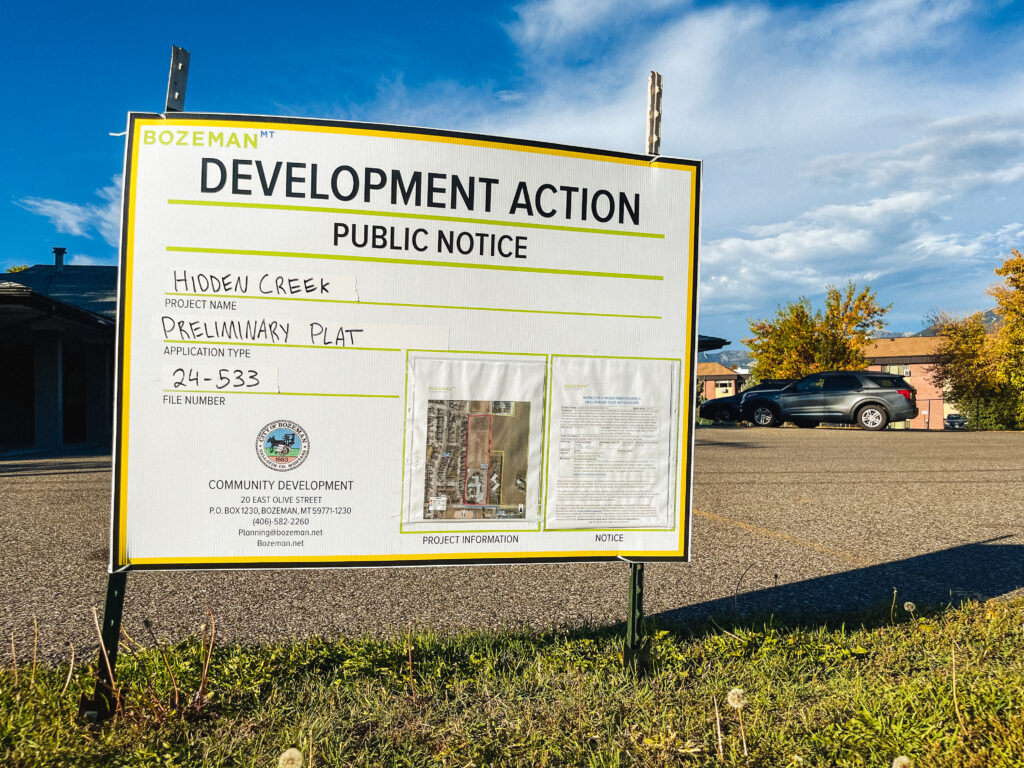

“Even with all of that subsidy, it is barely making it, and we haven’t broken ground yet,” Boyer told EBS.
Boyer said, due to how hard it is to subsidize affordable housing developments, she doesn’t expect the ballot initiative to accelerate their construction. Instead, she thinks it would serve as a kind of moratorium on building new housing in Bozeman.
WARD said that their ballot initiative would complement the city’s existing AHO.
“If our initiative passes, it would exist side by side with the city’s affordable housing ordinance, so they would both be tools that can be used to build affordable housing within the city,” Carty said.
Carty hopes that market-rate to luxury-rate developers will build less if the ballot initiative is adopted, while developers that are interested in giving back to the community would build more. But Fine thinks the ballot initiative’s affordability target is far too high to be effective.
“There is no magic to where housing comes from,” Fine said at the April city commission meeting. “You can’t will it into existence. You can’t regulate it into existence. When you require more than a feasible target of affordable housing in order to build market-rate development, you’re likely to get neither market-rate development or affordable development, and that has the potential to have a major impact on housing supply.”
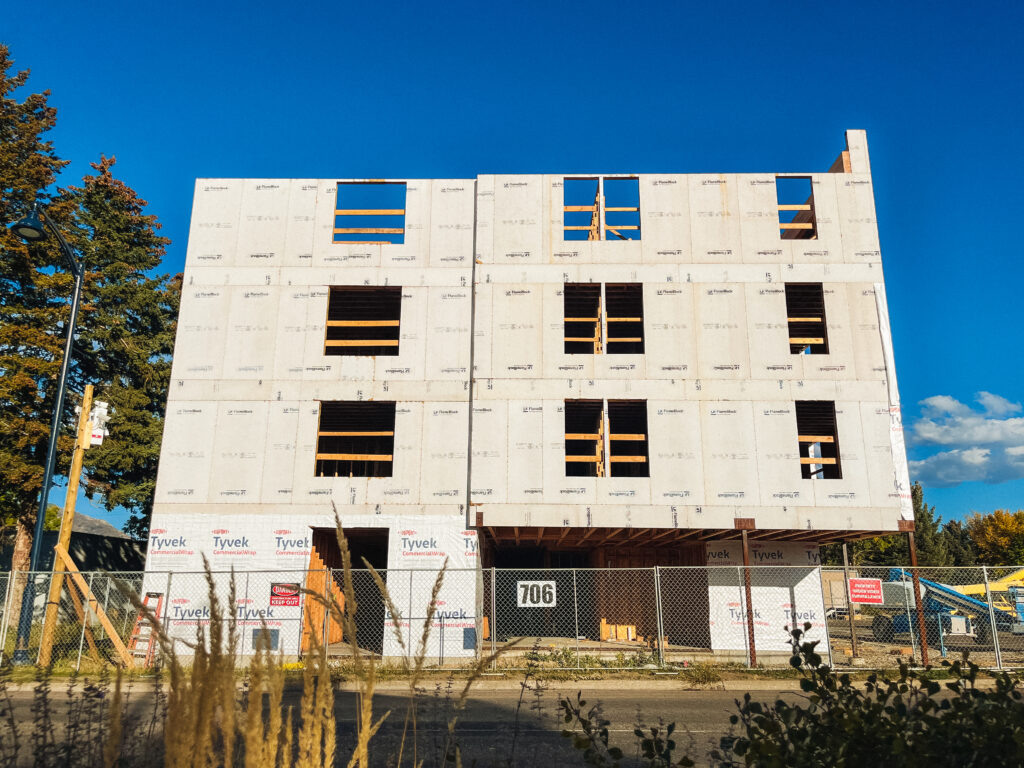
An affordable housing project under construction at the corner of 7th and Aspen St in Bozeman.PHOTO BY FISCHER GENAU 
This development was built through Bozeman’s Affordable Housing Ordinance. PHOTO BY FISCHER GENAU 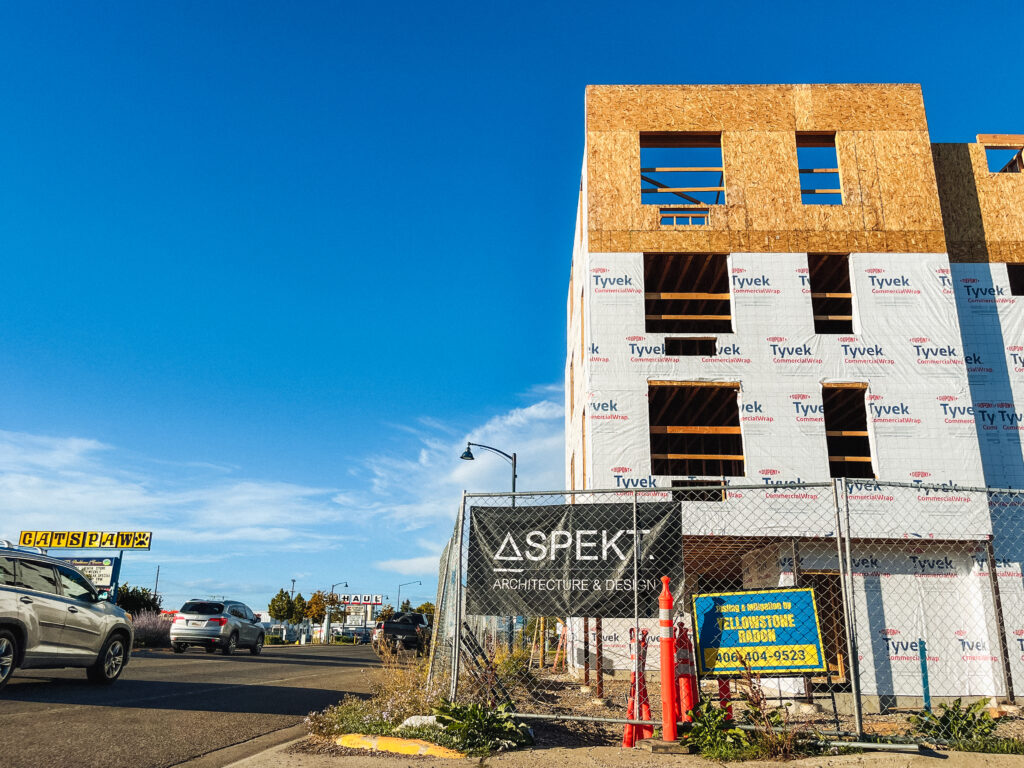
The finished project will consist of 95 rent-controlled units made for renters making 50-60% of the area’s AMI. PHOTO BY FISCHER GENAU 
Westlake Heights, a recently finished affordable housing project on N 3rd St. PHOTO BY FISCHER GENAU 
Westlake Heights contains 216 affordable units. PHOTO BY FISCHER GENAU 
This project used a $1.5 million subsidy from the Gallatin Housing Impact Fund. PHOTO BY FISCHER GENAU
Potential for urban sprawl
Critics of the ballot initiative say that developers will still build, just outside of Bozeman city limits. If this were to happen, new housing projects would still draw from the Gallatin Valley’s water supply, but rather than tapping into the city-run water system, they would draw from exempt wells that are less efficient and harder to regulate.
“This initiative will drive sprawl outside of the city limits, resulting in significant reduction in sustainability in several areas, including efficient water use, transportation impacts, and economic impacts,” Winn said at the city commission meeting.
But WARD says sprawl is already happening. At the city commission meeting, Nakamura argued that “the status quo is promoting sprawl,” as high housing prices push people outside of the city and into its surrounding areas. Carty agrees.
“I don’t see this ballot initiative, if it passes, causing any sprawl beyond what is already occurring,” Carty said.
The discourse between WARD and its critics has escalated as the election draws nearer, with both groups sending emails and hosting events to express their point of view. WARD is hosting a town hall about the ballot initiative at 6 p.m. on Oct. 2 at the Bozeman Public Library. The following week, the City of Bozeman is hosting a Q&A on WARD and the ballot initiative at 6 p.m. on Oct. 6 at HRDC’s Market Place. Both events are free and open to the public.
But ultimately it will be the voters that decide the fate of the Bozeman Water Adequacy Ballot Initiative. This year’s election will take place on Nov. 4.



